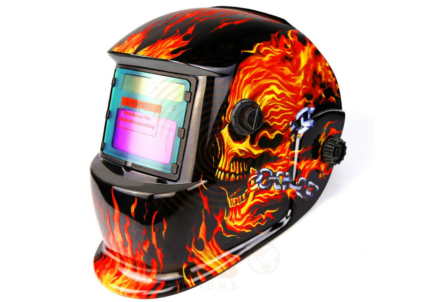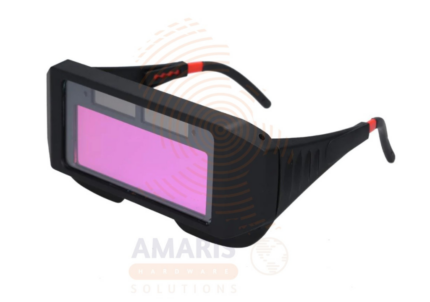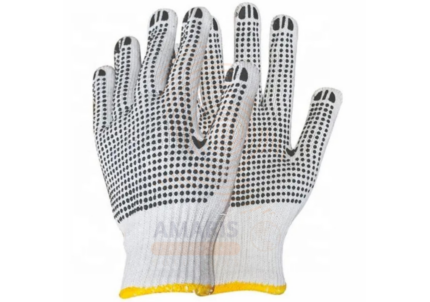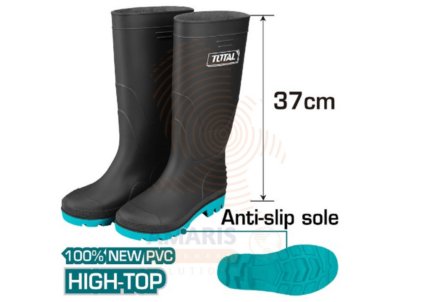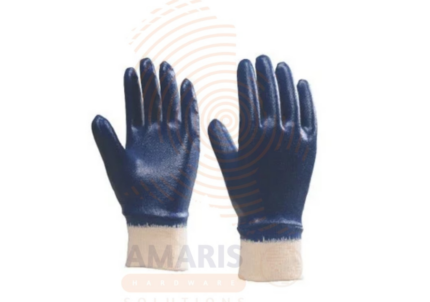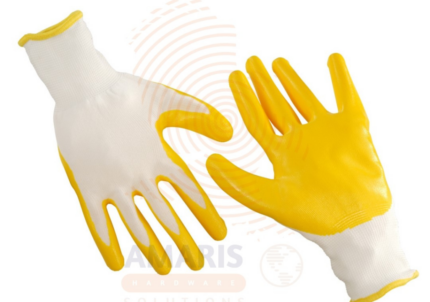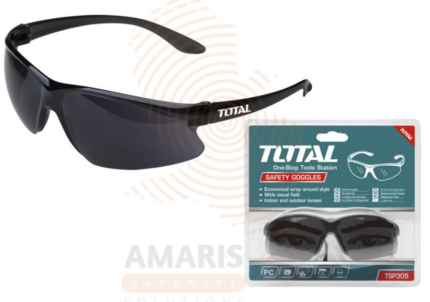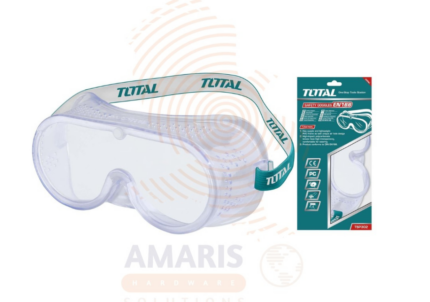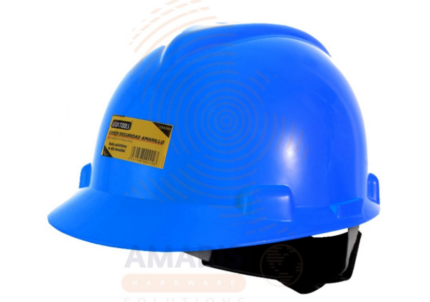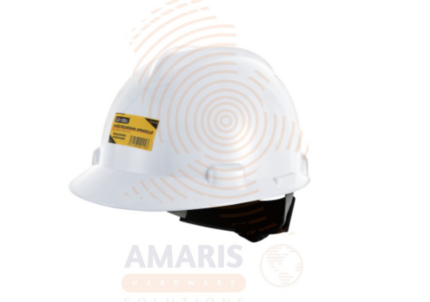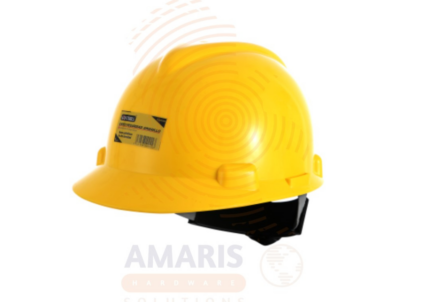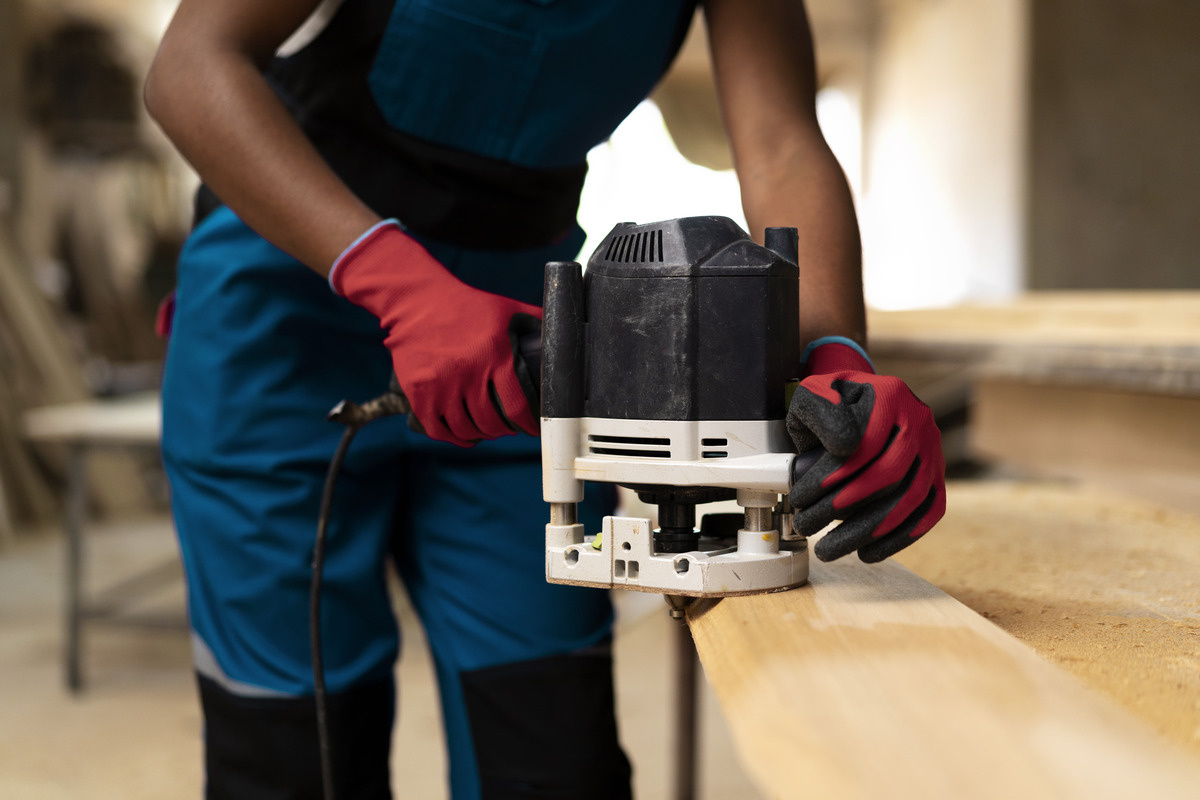
Auto Darkening Solar Powered Welding Helmet
An Auto Darkening Solar Powered Welding Helmet is a protective headgear device specifically designed for welders. It incorporates advanced technology to automatically adjust the darkness of the helmet's lens in response to the intensity of the welding arc. This type of helmet utilizes solar panels to harness and convert sunlight or welding arc light into energy, powering the automatic darkening mechanism. The key feature of an auto-darkening welding helmet is its ability to provide instant and adaptive shading, offering optimal visibility during welding while ensuring the welder's eyes are protected from harmful ultraviolet and infrared rays.
Auto Darkening Welding Glasses
Auto Darkening Welding Glasses, also known as auto-darkening welding lens or filter, is a specialized protective eyepiece used in welding helmets or welding masks. The key feature of auto-darkening welding glass is its ability to automatically adjust its shading level in response to the intensity of the welding arc.
This type of welding glass employs sensors that detect the bright light produced during welding. When an arc is struck, the auto-darkening filter rapidly darkens to a specified shade level, providing protection to the welder's eyes from the intense light and harmful ultraviolet (UV) and infrared (IR) radiation emitted during welding. Once the welding stops, the glass quickly returns to a lighter shade, allowing the welder to see their work without the need to lift the helmet or mask.
The advantage of auto-darkening welding glass over traditional passive welding filters is that it eliminates the need for manual adjustment of the helmet's position or the need to flip the helmet up and down between welding and inspection. This enhances both safety and efficiency for welders by providing continuous eye protection during the entire welding process.
Cut Resistant Gloves
Cut-resistant gloves are specialized protective garments designed to minimize the risk of injury from sharp objects, such as knives, glass, or sharp tools. These gloves are constructed using materials that possess high levels of cut resistance, often incorporating advanced fibers like Kevlar, Dynnema, or other similar materials. The primary purpose of cut-resistant gloves is to provide a barrier that reduces the likelihood of cuts, lacerations, or abrasions to the wearer's hands while handling potentially hazardous objects or performing tasks that involve sharp edges. These gloves are widely used in various industries, including manufacturing, construction, food handling, and healthcare, where the risk of cuts and injuries is prevalent.
Ear Muff
Ear muffs are a type of personal protective equipment designed to cover and protect the ears from noise, cold weather, or both. Typically consisting of two padded ear cups connected by a band that goes over the head, ear muffs are worn to reduce the intensity of loud sounds and to provide insulation against cold temperatures, ensuring the wearer's comfort and safety in various environments.
Face Mask
PRODUCT DESCRIPTION
A face mask is a protective covering that is worn over the nose and mouth to help reduce the transmission of respiratory droplets, providing a barrier against the spread of infectious agents such as viruses and bacteria. It serves as a preventive measure in various settings, including healthcare, public spaces, and during pandemics, to help limit the potential transmission of respiratory infections from person to person. Face masks are designed to filter or block respiratory droplets that may contain pathogens, thereby contributing to the overall efforts to maintain public health and safety.
Gas Respirator
PRODUCT DESCRIPTION
A gas respirator, also known as a gas mask, is a personal protective equipment device designed to provide a wearer with respiratory protection against the inhalation of harmful gases, vapors, and particulate matter in the air. It typically consists of a face piece that covers the nose and mouth, along with filters or cartridges that remove or neutralize contaminants from the air before the wearer breathes it in. Gas respirators are commonly used in various industries, emergency response situations, and military applications to safeguard individuals from exposure to hazardous airborne substances.
Insulated Combination Pliers
An insulated combination pliers is a type of hand tool designed for various gripping, cutting, and twisting tasks, featuring insulated handles to provide protection against electric shocks. These pliers typically have dual functionalities, combining elements of both lineman's pliers and long-nose pliers. The insulated handles are made of materials that offer electrical insulation, making them suitable for use in electrical and live-wire work to reduce the risk of electrical accidents. Insulated combination pliers are commonly used by electricians and other professionals working with live electrical circuits.
Insulated Heavy-Duty Diagonal Cutting Pliers
Insulated Heavy-Duty Diagonal Cutting Pliers refer to a specialized hand tool designed for cutting wires, cables, and other materials in electrical applications. The term "insulated" indicates that the tool is equipped with insulating materials on its handles, providing protection against electric shock. "Heavy-duty" implies that the pliers are robust and capable of handling tough cutting tasks, while "diagonal cutting" specifies the angled shape of the cutting edges, allowing for precise and efficient cutting in confined spaces. These pliers are commonly used by electricians and professionals working with electrical components to ensure safety and reliability in their tasks.
Insulated Safety Boots
Insulated safety boots are a type of footwear designed to provide protection for the feet in hazardous work environments while also offering insulation against extreme temperatures. These boots are commonly used in industries such as construction, manufacturing, and utilities where workers are exposed to various risks, including heavy objects, sharp materials, electrical hazards, and cold weather conditions.
Insulated Wire Stripping Pliers
Insulated wire stripping pliers are specialized hand tools designed for safely and precisely removing the insulation from electrical wires. These pliers typically feature specially shaped and sharpened cutting edges, allowing users to strip away the outer insulation without damaging the underlying conductive wires. The tool is also equipped with insulated handles to provide electrical safety for the user when working with live wires. Insulated wire stripping pliers are commonly used in electrical and electronic applications to prepare wires for connections, terminations, or splicing while minimizing the risk of electrical shock or damage to the conductor.
Knitted & Pvc Dots Gloves
- Knitted Gloves: Knitted gloves refer to hand coverings that are crafted through the process of knitting, a method of creating fabric by interlocking loops of yarn. These gloves are typically made from various types of yarn, such as cotton, wool, or synthetic fibers. Knitted gloves are known for their flexibility, comfort, and breathability, making them suitable for a wide range of activities and environments. They come in different styles, thicknesses, and designs to cater to various purposes, from lightweight and dexterous gloves for delicate tasks to heavier and insulated options for colder conditions.
- PVC Dots Gloves: PVC dots gloves are a type of work glove that features small raised dots or patterns made from polyvinyl chloride (PVC) on the palm or fingers. These dots enhance the grip and abrasion resistance of the gloves, providing better control and preventing slips when handling objects. The base material of PVC dots gloves can vary and may include fabrics like cotton, polyester, or a blend of materials. These gloves are commonly used in tasks where a secure grip is essential, such as in construction, manufacturing, or general labor. The PVC dots enhance the overall functionality of the gloves without sacrificing flexibility.
Latex Gloves
Latex gloves are protective coverings for the hands made from natural rubber latex. These gloves are commonly used in various industries, including healthcare and laboratory settings, as well as in everyday tasks. Latex gloves provide a barrier against contaminants, bacteria, and viruses, helping to prevent the transmission of infections. They are known for their elasticity, comfort, and tactile sensitivity, making them suitable for tasks that require precision and dexterity. It's important to note that some individuals may be allergic to latex, and in such cases, alternative materials like nitrile or vinyl gloves may be used.
Leather Gloves
Leather gloves are hand-covering garments made from the tanned hides of animals, typically cows, goats, or sheep. These gloves are crafted by cutting and stitching pieces of leather to form protective coverings for the hands. Leather gloves are valued for their durability, flexibility, and ability to provide a comfortable and stylish barrier against environmental elements, making them widely used for various purposes, including fashion, work, and outdoor activities.
Nitrile Gloves
PRODUCT DESCRIPTION
Nitrile gloves are a type of disposable protective glove made from synthetic rubber known as nitrile. These gloves are popular in various industries, including healthcare, laboratory work, and food handling, due to their excellent durability, puncture resistance, and chemical resistance. Nitrile gloves offer an alternative to latex gloves for individuals with latex allergies. They are also known for their snug fit and tactile sensitivity, making them suitable for tasks that require precision and fine motor skills.
Polyester Knit Glove
A polyester knit glove is a type of protective hand wear crafted from polyester fibers using a knitting process. These gloves are characterized by their lightweight, flexible, and breathable nature, making them suitable for a wide range of applications. The knit construction allows for a snug fit and dexterity, while the polyester material provides resistance to abrasions, dirt, and minor cuts. Polyester knit gloves find common use in various industries such as manufacturing, assembly, electronics, food handling, and general-purpose tasks where a balance of hand protection and tactile sensitivity is required.
Rain Boots
Rain boots, also known as Wellington boots or rubber boots, are waterproof footwear designed to protect the feet and lower legs from water and moisture. Typically made of rubber or other waterproof materials, these boots feature a high shaft that extends above the ankle to keep the wearer's feet dry in wet and rainy conditions. The design often includes a slip-on style with a sturdy sole for traction, making them practical for walking through puddles, mud, and other wet environments. Rain boots are commonly worn for outdoor activities during inclement weather to ensure comfort and protection against water.
Rubber Coated Gloves (Blue)
A Rubber Coated Gloves (Blue) refers to a type of protective hand wear that is constructed with a base material, commonly fabric or another flexible material, and has a layer of rubber applied or coated onto the surface of the gloves. The rubber coating serves various purposes, such as providing enhanced grip, protection against liquids, chemicals, or abrasions, and potentially increasing the overall durability of the gloves. The "blue" specification in this context likely refers to the color of the gloves, which may have been added for visibility or aesthetic reasons. These gloves are often used in industrial, medical, or other settings where hand protection and tactile sensitivity are important.
Rubber Coated Gloves (Yellow)
Rubber Coated Gloves (Yellow) are protective handwear designed for improved grip, durability, and safety in industrial, construction, gardening, and general handling tasks. These gloves feature a textured rubber coating—typically on the palm and fingers—over a flexible fabric liner, offering excellent resistance to abrasion, punctures, and light liquid exposure. Their yellow color enhances visibility, making them ideal for work environments where safety and control are critical.
Safety Goggles (only for welding)
Safety Goggles (only for welding) are specialized protective eyewear designed to shield the eyes from intense light, sparks, and debris produced during welding operations. These goggles are fitted with dark-tinted or shaded lenses that filter harmful ultraviolet (UV) and infrared (IR) radiation emitted by welding arcs and flames. They offer a snug, wraparound design to prevent particles and light from entering the sides, making them ideal for gas welding, cutting, brazing, and soldering. Their compact form factor makes them a convenient choice for close-up tasks and confined workspaces.
Safety Goggles (PVC)
Safety Goggles (PVC) are protective eyewear designed to shield the eyes from potential hazards in various environments, such as industrial workplaces, laboratories, or construction sites. These goggles typically feature impact-resistant lenses and a form-fitting frame to provide a barrier against flying debris, liquids, chemicals, or other materials that could cause harm to the eyes. The primary purpose of safety goggles is to enhance eye safety and prevent injuries by creating a physical barrier between the eyes and potential dangers, ensuring a higher level of occupational or recreational safety.
Safety Helmet (Blue)
A Safety Helmet (Blue), typically colored blue, is a protective headgear designed to minimize the risk of head injuries in various environments, especially in industrial, construction, and occupational settings. It consists of a hard outer shell made of durable materials, such as plastic or fiberglass, and an inner suspension system to absorb impact energy and provide cushioning. The blue color may serve as a visual identifier for specific roles, departments, or safety protocols within a workplace. The primary purpose of a safety helmet is to safeguard the wearer against falling objects, impact from collisions, or other potential hazards, contributing to overall workplace safety.
Safety Helmet (Orange)
A safety helmet (orange) is a protective headgear designed to mitigate the risk of head injuries in various industrial, construction, or recreational settings. Typically constructed with a hard outer shell and an inner suspension system, the helmet absorbs and distributes impact energy to reduce the severity of head trauma in the event of accidents, falls, or falling objects. The distinctive orange color serves as a visible indicator, enhancing safety by making wearers easily identifiable, especially in environments where high visibility is crucial. The helmet's design adheres to safety standards to ensure optimal protection for the wearer's head during potential hazards.
Safety Helmet (White)
A Safety Helmet (White), commonly referred to as a hard hat, is a head protection device designed to safeguard individuals from head injuries in various industrial, construction, or other occupational settings. The helmet typically consists of a hard outer shell made of impact-resistant materials, such as high-density polyethylene or fiberglass, and an inner suspension system that helps absorb and distribute impact energy. The white color of the safety helmet may serve functional or visibility purposes, such as enhancing the wearer's visibility in low-light conditions or indicating a specific role or status on a work site. The primary goal of a safety helmet is to provide protection against falling objects, impact, and electrical hazards, promoting the overall safety of individuals in hazardous work environments.
Safety Helmet (Yellow)
A safety helmet (yellow) is a protective headgear designed to mitigate the impact of potential head injuries in various industrial, construction, or recreational settings. Typically colored yellow for high visibility, it consists of a hard outer shell made of durable materials, such as plastic or fiberglass, and an inner suspension system to absorb and distribute impact energy. This safety equipment is crucial for safeguarding individuals from falling objects, impacts, or other potential hazards, promoting occupational safety and minimizing the risk of head injuries.
Transparent Safety Goggles
Transparent safety goggles are protective eyewear designed to shield the eyes from dust, debris, chemical splashes, and other workplace hazards. Made with clear, impact-resistant lenses, they offer full visibility while forming a secure seal around the eyes. These goggles are commonly used in industrial, laboratory, construction, woodworking, and medical environments. Many models feature anti-fog and scratch-resistant coatings, adjustable straps, and ventilation to enhance comfort during extended use. Their wraparound design provides superior protection compared to standard safety glasses.
Welding Glass
A welding glass, also known as a welding lens or welding filter, is a specialized protective eyewear designed for use by welders to shield their eyes from intense light and harmful radiation produced during welding processes. Typically made of a tinted or shaded glass, welding glasses filter out ultraviolet (UV) and infrared (IR) radiation, as well as visible light, to provide adequate protection for the welder's eyes. The level of shading in welding glass is specified by a shade number, with higher numbers indicating greater protection against intense light. Welding glasses are a crucial safety measure to prevent eye injuries and conditions such as arc eye or welder's flash, which can result from exposure to the intense light generated during welding.
Welding Googles
Welding goggles are specialized protective eyewear designed to shield the eyes from intense light, sparks, and debris generated during welding processes. They typically feature dark lenses that provide effective protection against the bright arc produced during welding, preventing eye injuries and minimizing the risk of vision damage from ultraviolet (UV) and infrared (IR) radiation. Welding goggles also offer a secure and comfortable fit to ensure the safety and well-being of the wearer while engaged in welding activities.


 Acrylic Sealants
Acrylic Sealants Construction Adhesives
Construction Adhesives Double-Sided Tape
Double-Sided Tape Duct Tape
Duct Tape Electrical Tape
Electrical Tape Epoxy & Resins
Epoxy & Resins Masking Tape
Masking Tape
 Automotive Wrenches & Socket Sets
Automotive Wrenches & Socket Sets Battery Chargers & Jump Starters
Battery Chargers & Jump Starters Car Jacks & Stands
Car Jacks & Stands Car Wash & Detailing Products
Car Wash & Detailing Products Diagnostic Tools
Diagnostic Tools Tire Inflators
Tire Inflators Vehicle Lighting
Vehicle Lighting Oil & Lubricants
Oil & Lubricants
 Adhesives & Sealants
Adhesives & Sealants Bricks & Blocks
Bricks & Blocks Cement & Concrete
Cement & Concrete Drywall & Plaster
Drywall & Plaster Flooring (Tiles, Wood, Laminate)
Flooring (Tiles, Wood, Laminate) Lumber & Plywood
Lumber & Plywood Paints, Primers & Coatings
Paints, Primers & Coatings Insulation Materials
Insulation Materials Roofing Materials
Roofing Materials
 Circuit Breakers
Circuit Breakers Electrical Cables & Wires
Electrical Cables & Wires Switches & Sockets
Switches & Sockets Fuses & Relays
Fuses & Relays Connectors & Terminals
Connectors & Terminals Electrical Boxes & Panels
Electrical Boxes & Panels Conduit & Fittings
Conduit & Fittings Lighting Fixtures & Bulbs
Lighting Fixtures & Bulbs Extension Cords & Power Strips
Extension Cords & Power Strips
 Anchors
Anchors Bolts
Bolts Clips & Clamps
Clips & Clamps Screws
Screws Nuts
Nuts Washers
Washers Rivets
Rivets Nails
Nails Threaded Rods
Threaded Rods
 Hammers
Hammers Measuring Tools (Tapes, Levels, Calipers)
Measuring Tools (Tapes, Levels, Calipers) Screwdrivers
Screwdrivers Pliers & Cutters
Pliers & Cutters Saws & Blades
Saws & Blades Chisels & Punches
Chisels & Punches Allen Keys & Hex Keys
Allen Keys & Hex Keys Ratchets & Socket Sets
Ratchets & Socket Sets Wrenches & Spanners
Wrenches & Spanners
 Power Tool Accessories (Blades, Bits, Discs)
Power Tool Accessories (Blades, Bits, Discs) Rotary Tools
Rotary Tools Saws (Circular, Jigsaw, Reciprocating)
Saws (Circular, Jigsaw, Reciprocating) Drills & Drivers
Drills & Drivers Grinders & Sanders
Grinders & Sanders Heat Guns
Heat Guns Nail Guns
Nail Guns Impact Wrenches
Impact Wrenches Batteries & Chargers
Batteries & Chargers
 Pipes & Fittings (PVC, Copper, PEX)
Pipes & Fittings (PVC, Copper, PEX) Plumbing Tools
Plumbing Tools Pumps & Motors
Pumps & Motors Sealants & Adhesives for Plumbing
Sealants & Adhesives for Plumbing Valves & Taps
Valves & Taps Water Heaters
Water Heaters Drainage Systems
Drainage Systems Faucets & Fixtures
Faucets & Fixtures Hoses & Tubing
Hoses & Tubing
 Hinges & Latches
Hinges & Latches Hooks & Brackets
Hooks & Brackets Window Hardware
Window Hardware Chains & Cables
Chains & Cables Casters & Wheels
Casters & Wheels Shelving & Storage Systems
Shelving & Storage Systems Door Handles & Locks
Door Handles & Locks Drawer Slides & Cabinet Hardware
Drawer Slides & Cabinet Hardware
 Personal Protective Equipment (PPE)
Personal Protective Equipment (PPE) Respirators & Masks
Respirators & Masks Safety Glasses
Safety Glasses Safes
Safes Security Cameras
Security Cameras Gloves
Gloves Helmets
Helmets Ear Protection
Ear Protection Fire Safety Equipment
Fire Safety Equipment Locks & Padlocks
Locks & Padlocks Motion Sensors & Alarms
Motion Sensors & Alarms
 Garden Fencing
Garden Fencing Garden Furniture Hardware
Garden Furniture Hardware Lawn Mowers
Lawn Mowers Trimmers & Edgers
Trimmers & Edgers Shovels & Spades
Shovels & Spades Rakes & Hoes
Rakes & Hoes Pruning Shears & Loppers
Pruning Shears & Loppers Watering Systems (Hoses, Sprinklers, Nozzles)
Watering Systems (Hoses, Sprinklers, Nozzles)
 Interior Paints
Interior Paints Paint Brushes & Rollers
Paint Brushes & Rollers Paint Strippers & Thinners
Paint Strippers & Thinners Paint Trays & Accessories
Paint Trays & Accessories Exterior Paints
Exterior Paints Spray Paints
Spray Paints Primers & Undercoats
Primers & Undercoats Varnishes & Stains
Varnishes & Stains
 Gaskets & Seals
Gaskets & Seals Hydraulic Fittings
Hydraulic Fittings Industrial Fasteners
Industrial Fasteners Industrial Hoses
Industrial Hoses Lubricants & Greases
Lubricants & Greases Metal Sheets & Bars
Metal Sheets & Bars Bearings & Bushings
Bearings & Bushings Belts & Pulleys
Belts & Pulleys
 HVAC Filters
HVAC Filters Insulation for HVAC
Insulation for HVAC Air Conditioners
Air Conditioners Refrigerants
Refrigerants Ventilation Ducts & Fittings
Ventilation Ducts & Fittings Thermostats & Controllers
Thermostats & Controllers Fans & Blowers
Fans & Blowers
 Pegboards & Hooks
Pegboards & Hooks Shelving Units
Shelving Units Storage Bins & Containers
Storage Bins & Containers Toolboxes & Tool Chests
Toolboxes & Tool Chests Workbenches
Workbenches Drawer Organizers
Drawer Organizers Labeling Supplies
Labeling Supplies
 Welding Accessories (Clamps, Brushes)
Welding Accessories (Clamps, Brushes) Welding Electrodes & Rods
Welding Electrodes & Rods Welding Helmets & Gloves
Welding Helmets & Gloves Welding Machines
Welding Machines Soldering Irons & Stations
Soldering Irons & Stations Flux & Solder Wire
Flux & Solder Wire
 Generator Accessories
Generator Accessories Inverters
Inverters Portable Generators
Portable Generators Power Inverters
Power Inverters Transfer Switches
Transfer Switches Diesel & Gasoline Generators
Diesel & Gasoline Generators
 Transport Equipment: Carts, Dollies, and Hand Trucks
Transport Equipment: Carts, Dollies, and Hand Trucks Storage Solutions: Pallets, Racks, and Containers
Storage Solutions: Pallets, Racks, and Containers Lifting Equipment: Hoists, Cranes, and Jacks
Lifting Equipment: Hoists, Cranes, and Jacks Conveyors and Accessories: Belts and Rollers
Conveyors and Accessories: Belts and Rollers